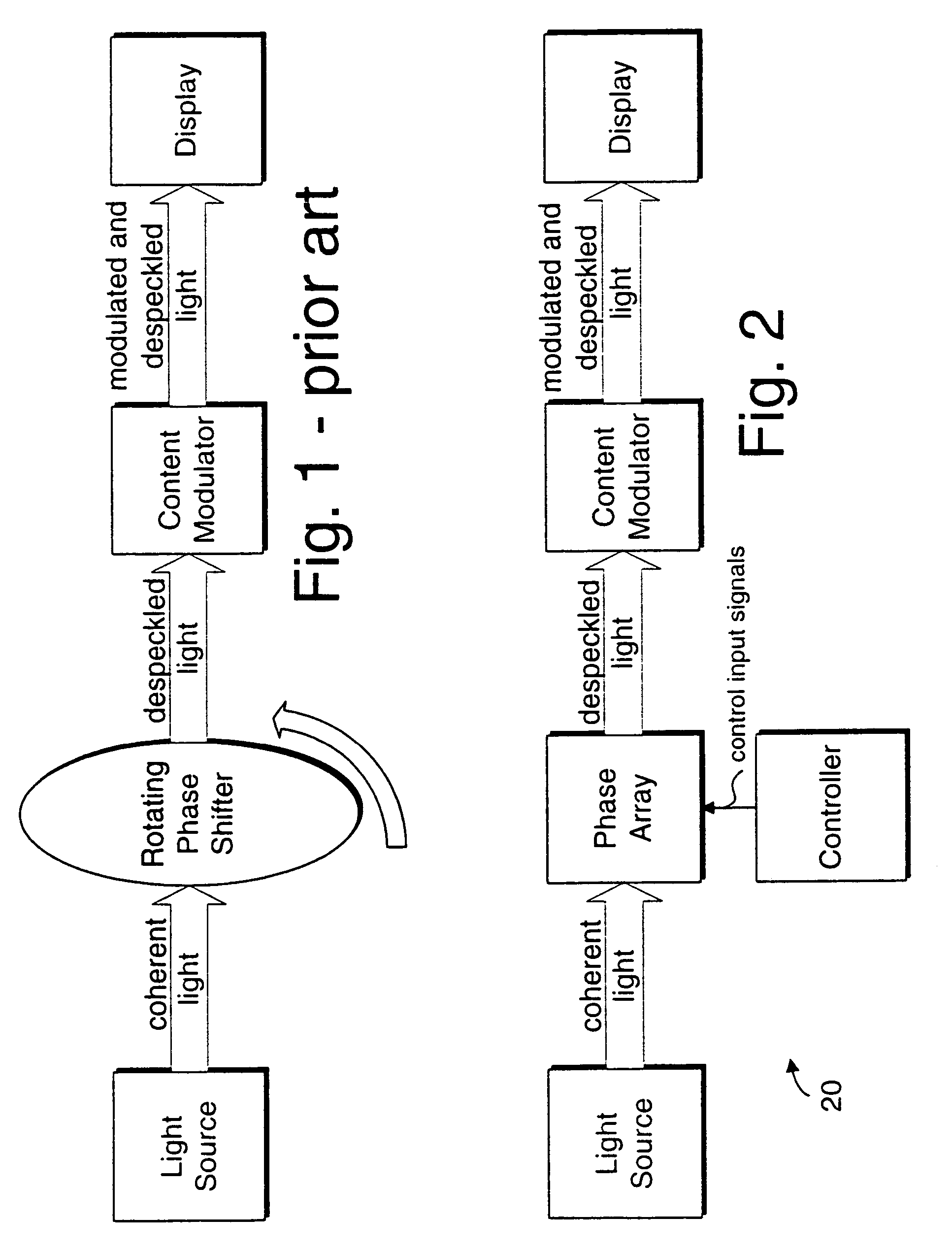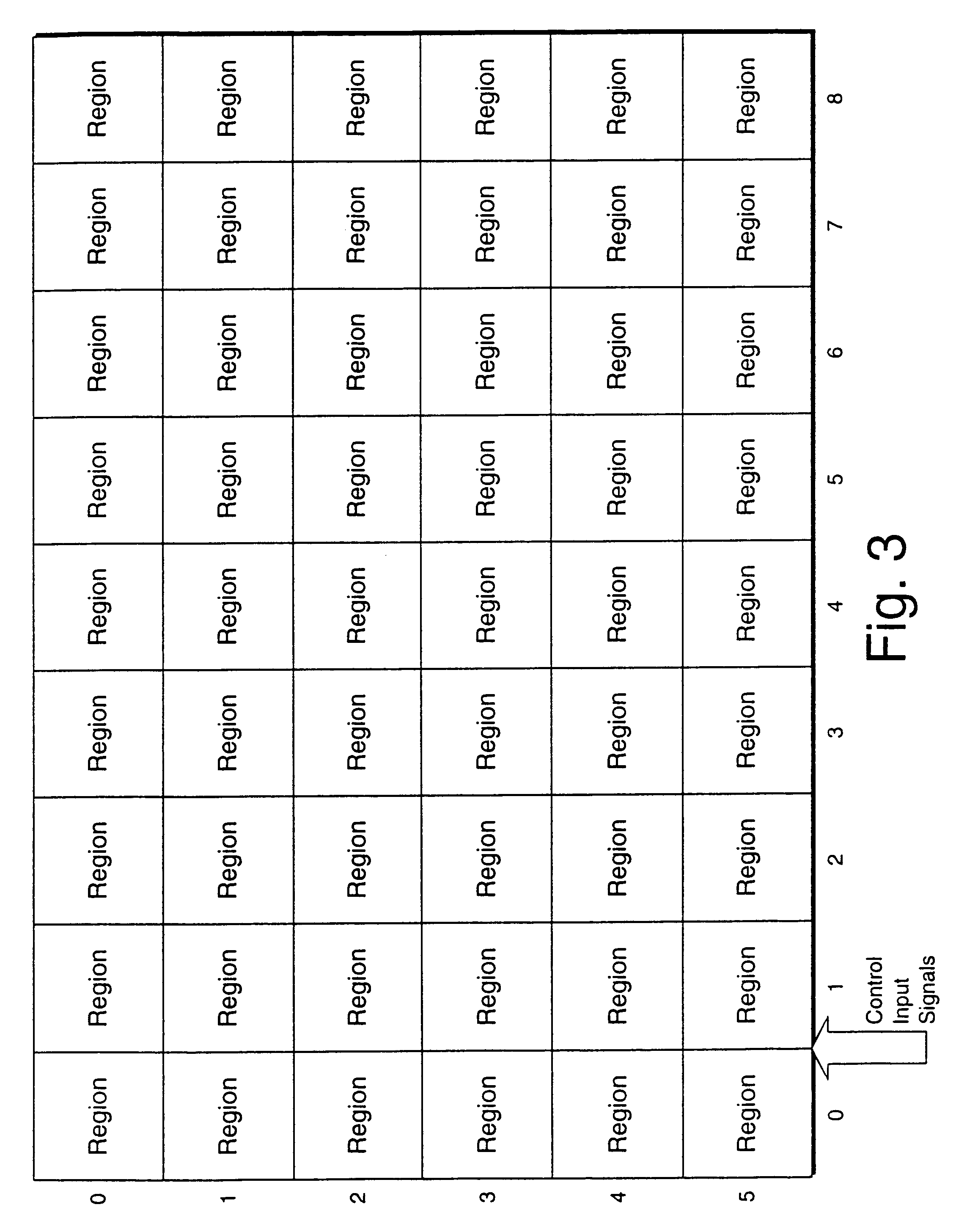Coherent light despeckling
a light speckling and coherent technology, applied in the field of coherent light speckling, can solve the problems of varying degrees of artifacting, reducing coherent light speckling, and difficulty in discerning the tiger by the ey
- Summary
- Abstract
- Description
- Claims
- Application Information
AI Technical Summary
Problems solved by technology
Method used
Image
Examples
Embodiment Construction
[0029]FIG. 2 shows a display system 20 according to one embodiment of this invention. The display system may be any display system in which a coherent light source is employed, including but not limited to: televisions, display televisions, computer monitors, projectors, movie theater projectors, direct-to-eye projectors, head-up displays, and the like.
[0030]The light source may provide only one base color for the system, such as red, or it may provide a plurality of colors. One example of a suitable light source is a laser. The light source may be the sole light source in the display system, or it can be used in conjunction with other light sources that may, themselves, be coherent or non-coherent.
[0031]Light from the light source may exhibit coherency in one or more dimensions, under one or more conditions, or at one or more times. It is not necessary that the light actually exhibit coherency at all times, nor under all conditions, nor that coherency would cause speckling which is...
PUM
 Login to View More
Login to View More Abstract
Description
Claims
Application Information
 Login to View More
Login to View More - R&D
- Intellectual Property
- Life Sciences
- Materials
- Tech Scout
- Unparalleled Data Quality
- Higher Quality Content
- 60% Fewer Hallucinations
Browse by: Latest US Patents, China's latest patents, Technical Efficacy Thesaurus, Application Domain, Technology Topic, Popular Technical Reports.
© 2025 PatSnap. All rights reserved.Legal|Privacy policy|Modern Slavery Act Transparency Statement|Sitemap|About US| Contact US: help@patsnap.com



